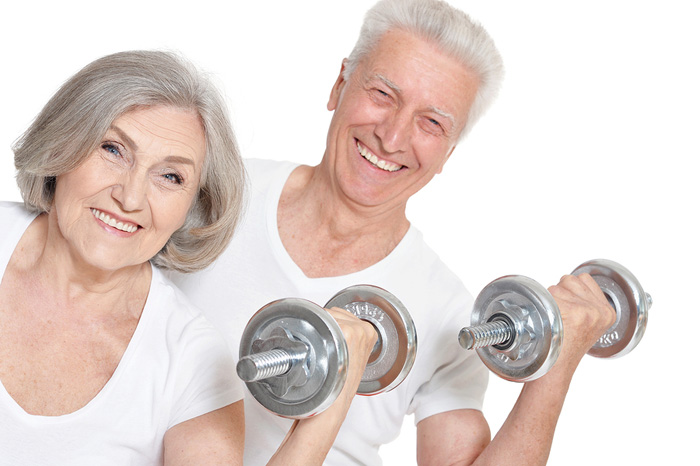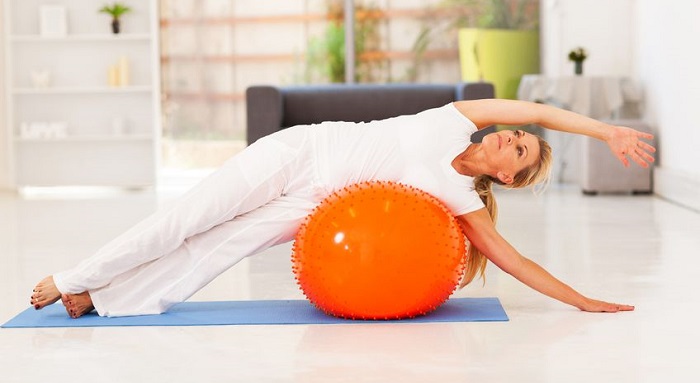Exercises to Improve Posture That Are Easy to Do
 Humans weren't meant to walk this way.
Humans weren't meant to walk this way.How Important Are Exercises to Improve Posture?
How heavy is your head? For every inch of forward head posture, the weight of your head places approximately 10 additional pounds on your spine. For normal posture the weight is about 10 lbs; 2 inches forward is 32 lbs; and 3 inches forward is a whopping 42 lbs. Forward head posture causes degeneration of disks in the neck.
Exercises to improve posture are important as your body ages. As you age, certain muscles begin to tighten and other muscles get weaker. Posture deteriorates as the result of tighter chest muscles and weaker back muscles. Shoulders round and the head moves forward. Depending on your age, you can prevent, stop, or reverse this trend with the right forms of exercise.
When you improve your posture, you protect your muscles, joints and ligaments from excess strain. Your spine is less prone to injury from everyday activities when it is supported by muscles that enable excellent posture. You are also less likely to suffer injuries when bending and twisting if you hold your body in proper alignment. Good posture also decreases the risk of falling.
Both strength and flexibility exercises are the best exercises to improve posture. I strongly suggest that you read more about the benefits of strength training and the importance of flexibility after you learn the gentle movements presented here.
Simple Exercises to Improve Posture
The following exercises are easy to perform, and you can do them anywhere, at any time, and as often as you would like.
Note: Some people have a tendency to hold their breath and push their stomach outward when doing certain movements. Concentrate on breathing deeply while holding your stomach in.
Shoulder Raises
Sit in a chair, on a couch, or at the edge of your bed. You might consider sitting on an exercise ball to engage other muscles. Place your feet flat on the floor, and straighten your back while allowing your shoulders to roll slightly backwards. Raise your shoulders up toward your ears while taking a deep breath. This motion comes entirely from your shoulders. Hold your shoulders up for 30-60 seconds, and then slowly release while rolling them back to the starting position, exhaling on the way down.
This is a one of those great exercises to improve posture that you can perform almost anywhere. It doesn’t take much effort, but it can make a significant difference if you do it consistently over a long period of time.
Wall Exercise
Lean your back against a wall with your feet about a foot away from the wall. Press the small of your back, shoulders, and head against the wall.
Starting with your arms hanging at your side, turn your palms facing forward. Slowly raise your arms out to the side while keeping palms facing forward. When your arms reach shoulder height, bend them at the elbows at 90-degree angles with hands still facing forward while pressing hands, elbows and shoulders against the wall. Hold for 30-60 seconds. Slowly reverse this movement and repeat as many times as you feel comfortable.
This exercise helps to straighten your back and drop your shoulders into proper alignment. It also strengthens and stretches your shoulder blades and back muscles so that your spine is well supported.
Planks
Planks improve posture by strengthening the back, shoulders, hamstrings, gluteus muscles, and core. Strengthening these areas encourage proper spine alignment.
Start on hands and knees. Align your elbows or hands with your shoulders (depending on the position you choose -- straight or bent arms), straighten your legs while resting your weight on the balls of your feet. Be sure your body is in a straight line. Don't allow your hips to drop or raise it too high.
The Plank Pose is a powerful, full-body exercise.
Hold this position for 30-60 seconds.
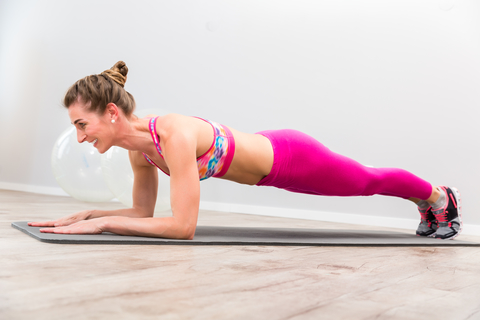 Plank Pose done correctly.
Plank Pose done correctly.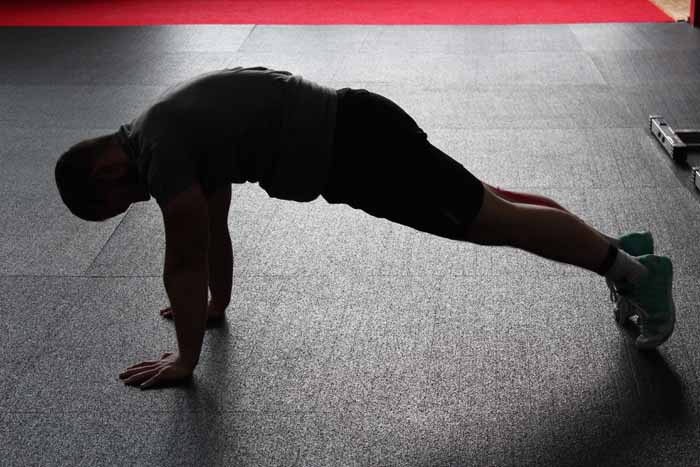 Plank Pose done incorrectly. Don't round or arch your back, and don't allow your hips to drop or elevate.
Plank Pose done incorrectly. Don't round or arch your back, and don't allow your hips to drop or elevate.Shoulder Circles
You can perform this exercise seated or standing. It’s a great way to fill those idle moments when you’re waiting in line or at a red light. It takes very little motion but can help strengthen and stretch your shoulders so that it’s easier to maintain proper posture throughout the day.
Start by raising your shoulders up toward your ears as your arms are relaxed at your sides. Drop and roll your shoulders back slightly, and then round them down to your starting position. You are essentially drawing big, backward circles with your shoulders.
You can also perform this movement by extending your arms out on each side and making circular motions with your arms. This extended arm movement is great to do in water because of the added resistance.
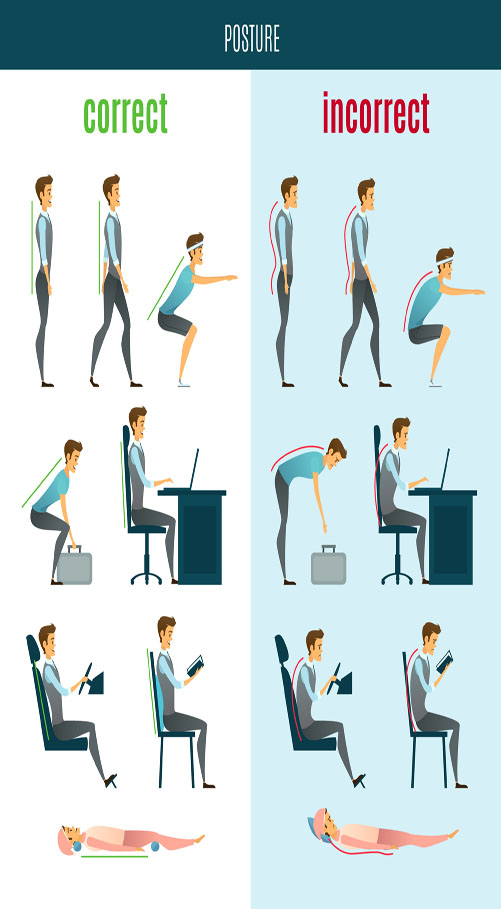
These exercises to improve posture are a great start; but, the best thing you can do is pay close attention to how you sit and stand in daily life.
Make an effort to straighten up if you notice that your shoulders are slouching or your back is curved. Pick your head up and make an effort to look people in the eye rather than walking with your face to the ground.
Include strength and flexibility exercises twice each week. Strong abdominal muscles are necessary to maintain good body posture during almost all daily activities and for normal spine functioning.
Remember what your mother always told you about standing straight. It was great advice!
More Topics That May Interest You
Some of the advertisers on my website are affiliate partners, which means that I may receive a small commission from any sale, at no extra cost to you.
For example, the Amazon affiliate advertising program is designed to provide a means for sites to earn fees by advertising and linking to amazon.com.
Your tips and purchases help to support this free-information website.
Thank you.
The content of this website is for informational purposes only and not intended to be taken as a replacement for professional medical advice, care, diagnosis or treatment by a doctor, dietitian, physical therapist, nutritionist or fitness instructor.
DO NOT BEGIN ANY EXERCISE PROGRAM WITHOUT CHECKING WITH YOUR DOCTOR FOR UNDERLYING CONDITIONS THAT MAY PREVENT YOU FROM DOING SO.



